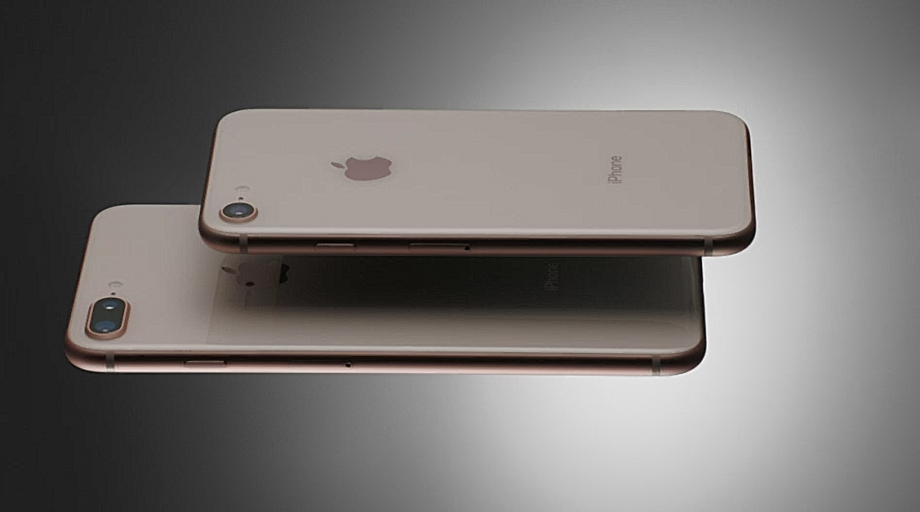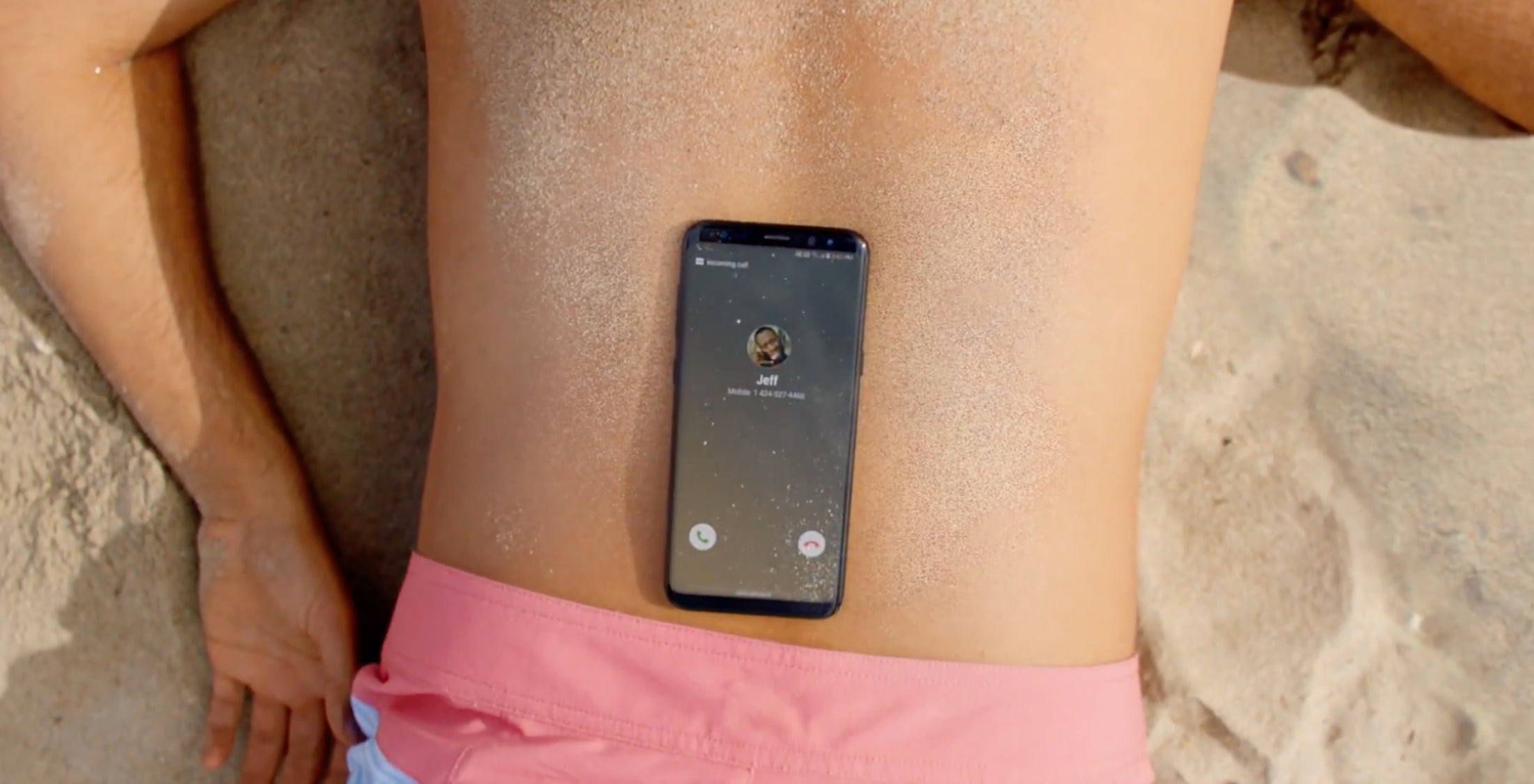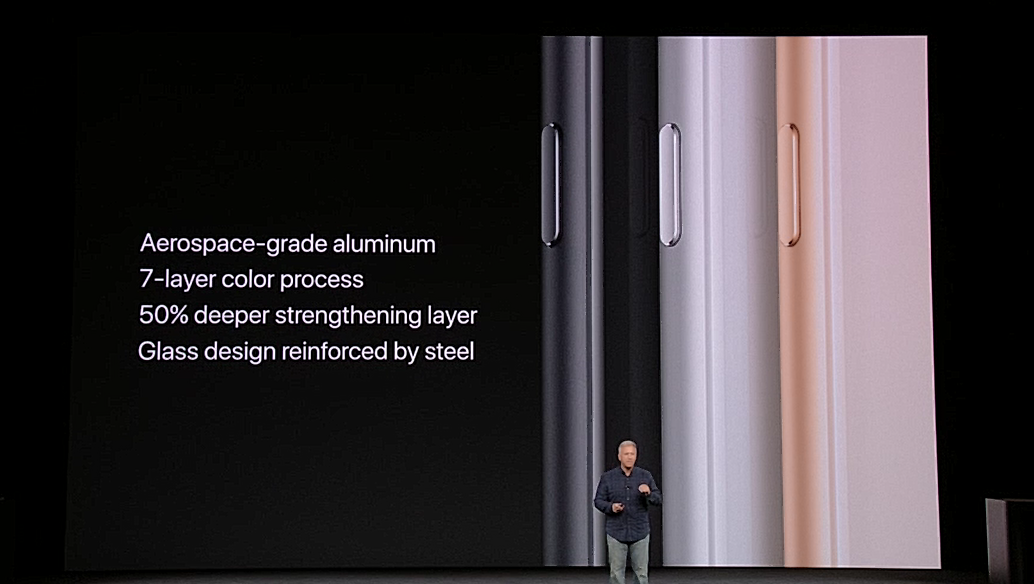iPhone 8 vs Samsung Galaxy S8: What’s the difference?

iPhone 8 vs Samsung Galaxy S8: Apple vs Android showdown
With the iPhone 8 finally official, the biggest smartphone battle of the year is about to kick-off.
Samsung has returned to form after the failed Galaxy Note 7, with the Galaxy S8 and Note 8 both featuring stunning designs and high-end features.
But can the iPhone 8 compete? Let’s have a look and see.
| iPhone 8 | iPhone 8 Plus | Galaxy S8 | ||||
| Screen | 4.7-inch LCD | 5.5-inch LCD |
5.8-inch Super AMOLED
|
|||
| Display | 1334×750 (326ppi) |
1920×1080 (401ppi)
|
2960×1440 (570ppi)
|
|||
| Aspect ratio | 16:9 | 16:9 | 18.5:9 | |||
| Rear camera | 12MP, f/1.8, OIS |
12MP wide-angle, f/1.8, OIS | 12MP telephoto, f/2.8, OIS
|
12MP, f/1.7, OIS | |||
| Front camera | 7MP, f/2.2 | 7MP, f/2.2 | 8MP, f/f.7 | |||
| Chipset | Apple A11 Bionic | Apple A11 Bionic |
Qualcomm Snapdragon 835 or Samsung Exynos 8895
|
|||
| RAM | Not stated | Not stated | 4GB | |||
| Storage | 64/256GB | 64/256GB | 64GB | |||
| Battery | Not stated | Not stated | 3000mAh | |||
| Waterproof? | IP67 | IP67 | IP68 | |||
| Fingerprint scanner? | Yes | Yes | Yes | |||
| Face/Iris scanner? | No | No | Yes/Yes | |||
| Headphone jack? | No | No | Yes | |||
| Data port | Lightning | Lightning | USB-C | |||
| Wireless charging? | Qi | Qi | Qi/PMA | |||
| MicroSD slot? | No | No | SDXC | |||
| Dimensions | 67.3×138.4×7.3mm |
78.1×158.4×7.5mm
|
68.1×148.9x8mm
|
|||
| Weight | 148g | 202g | 155g | |||
Samsung Galaxy S8 vs iPhone 8 Design: What’s the difference?
The Samsung Galaxy S7 was a nice phone, but the Galaxy S8 is next level. It has a curved AMOLED display that melts into the metal and glass back and helps it sit comfortably in your hand.
It’s big, yes – it’s always going to big be with a 5.7-inch display – but it’s not too big. If anything, it’s the smallest big phone there is thanks to its narrower and taller design.
Related: iPhone X
A speaker, USB-C port, and headphone jack sit on the S8’s bottom, while a terribly placed fingerprint scanner lies next to the camera module on the back.
The iPhone 8 lacks the headphone jack – Apple was never going to have the ‘courage’ to bring it back – but it does match the Samsung Galaxy S8 by being water-resistant.
Related: iPhone 9
At first glance, and we won’t know more until we get our hands on the phone, that the Galaxy S8 is the better looking phone. The iPhone 8 looks almost like the iPhone 7, but replaces the metal back for a glass one. If you want something that looks a whole lot more futuristic, the iPhone X is for you.
Both the iPhone 8 and Samsung Galaxy S8 have glass backs. This allows for them both to be capable of wireless charging when paired with the right Qi-enabled accessory. Samsung has been doing wireless charging for years now, but the iPhone 8 and iPhone X are the first of Apple’s device to support it.
Related: Apple TV 4K

Another thing that both Samsung and Apple do is offer their flagship phones in multiple flavours. Both the iPhone 8 and Galaxy S8 can be bought in larger, plus models. The S8 Plus has a 6.2-inch, while the iPhone 8 Plus ups the 4.7-inch display to 5.5-inches.
Register for Galaxy S9 with Mobiles.co.uk and Carphone Warehouse to find out more about the release
Samsung Galaxy S8 vs iPhone 8 specs: Which is more powerful?
Both of these phones offer power in swathes, and they’re sure to be two of the speediest phones of 2017.
Samsung has equipped the Galaxy S8 with a Snapdragon 835 processor (Exynos 8895 in Europe) along with 4GB RAM. Apple’s iPhone 8 uses an A11 chip that likely is built using the same 10nm manufacturing process as both the 835 and Exynos 8895. Basically, a smaller manufacturing process means a more efficient chipset.
We don’t yet know how much RAM will be in the iPhone 8, but expect it to be either 2/3GB (like the iPhone 7 or iPhone 7 Plus respectively) or 4GB (like the iPad Pro 2).
Related: Apple Watch 3

In terms of display, Apple and Samsung take quite opposing directions. The Galaxy S8 possess a stunning 5.7-inch AMOLED Infinity Display that stretches edge-to-edge like the iPhone X. It’s a quad-HD resolution screen that supports HDR content from the likes of YouTube, Prime Video and Netflix.
The iPhone 8 and 8 Plus, on the other hand, sticks to an IPS LCD panel with the same resolutions as the previous phones. That means the 8 Plus has a 1080p panel, while the 8 has a resolution slightly above 720p.
On the back of the Samsung Galaxy S8 there’s a single 12-megapixel camera with an f/1.7 aperture. The S8’s camera is great and it capable of quickly taking accurate, natural looking photos without fussing with various modes. The iPhone 8 is equipped with a 12MP camera and the iPhone 8 Plus has a dual 12MP camera with an f/1.8 aperture and f/2,8 aperture.
Apple says the new cameras have better autofocus, built-in noise reduction and bigger sensors. The iPhone 8 Plus also has a new ‘Portrait Lighting’ mode that uses the cameras to adjust the lightning on a persons face. It sounds clever, but we’ll have to wait and see how it actually works in real life.
Related: Best iPhone 8 cases
Samsung Galaxy S8 vs iPhone 8 Summary: What’s the difference?
Design: The Samsung Galaxy S8 sports an edge-to-edge display curved sides and curved back. The iPhone 8 is a more familiar design, but now sports a glass back, Both phones are IP-rated for water-resistance. Only the Galaxy S8 has a headphone jack.
Specs: Both phones have top-end specs. Running the Galaxy S8 is a Snapdragon 835 CPU, while the iPhone 8 has an Apple-made A11 chip. Apple sticks to Retina LCDs for the 8, while Samsung goes AMOLED with a HDR support.
Price: The Samsung Galaxy S8 starts at £689, with the Plus model hitting £769. The iPhone 8 starts at $699, with the Plus model starting at $799.
Follow the link below to see how the iPhone 8 compares to big sibling, the iPhone 8 Plus.
iPhone 8 or Galaxy S8, which is your pick? Tweet your thoughts to @TrustedReviews.


